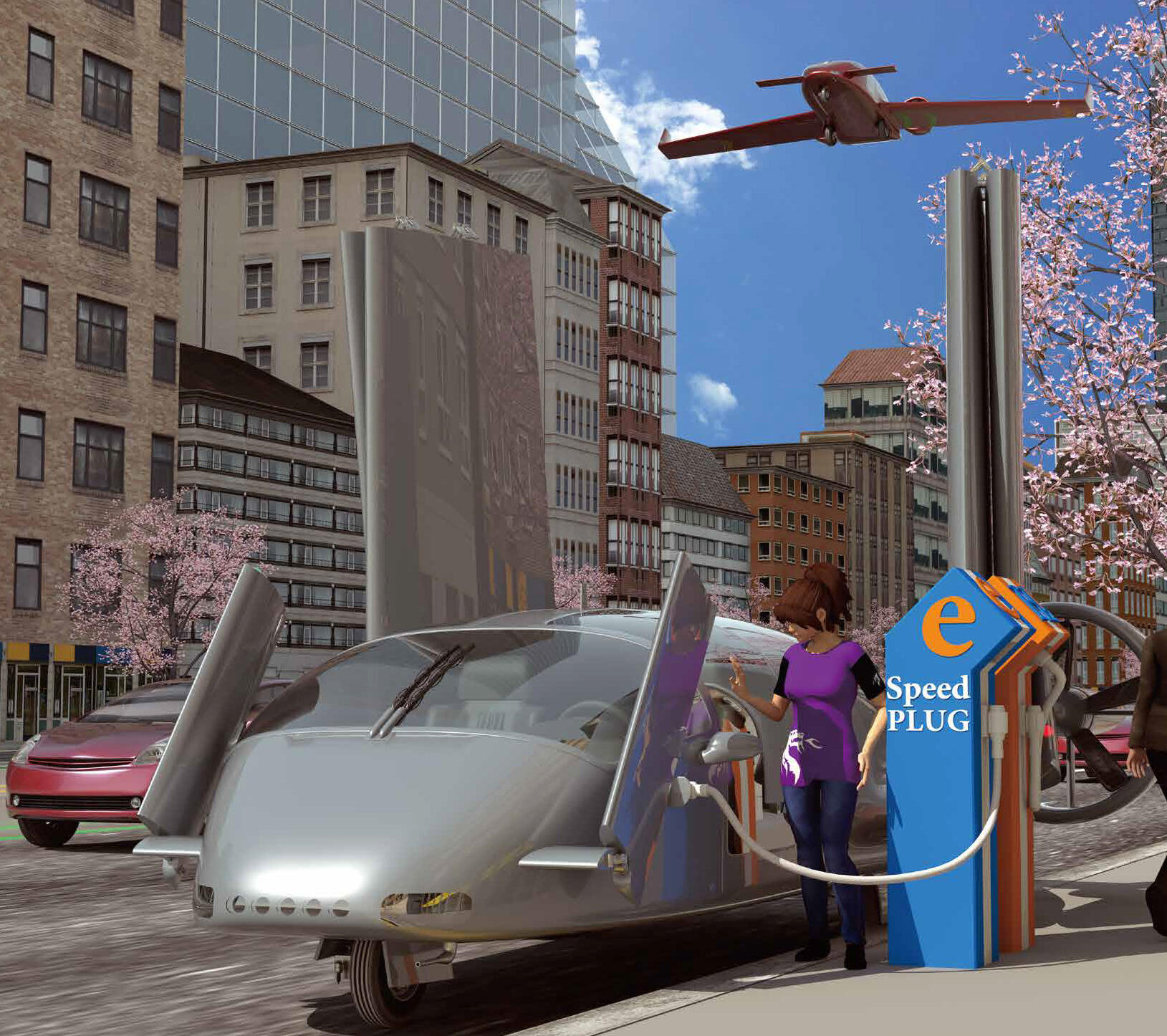Aviation Technology Directorate
Reducing Emissions of CO2 and Other Greenhouse Gases
Development of Electric Aircraft
Technologies for the Protection of
the Atmospheric Environment
In recent years, JAXA has been conducting R&D for the electrification of aircraft, aiming to develop an airplane that gets propulsion not only from a conventional jet engine but also from electricity. We interviewed KOBAYASHI Hiroshi, associate researcher of the Hybrid Electric Aircraft Team, about why the team is working on the electrification of aircraft
“For automobiles, a lot of progress has been made for electrification, and these days we often see hybrid and electric vehicles on the road,” says KOBAYASHI. “The electrification trend has already started in the aircraft industry as well, and the demand for electric aircraft is expanding for the protection of the global environment. In response, JAXA has been conducting research and development of so-called 'emission-free' aircraft technologies that can reduce greenhouse gas emissions, such as CO2 and nitrogen oxides (NOx).”
JAXA aims to develop electrification technologies for an emission-free aircraft that will contribute to cutting per-flight fuel consumption and reducing aviation-related CO2 emissions, and plans to put the developed technologies into practical use sometime in the period of the 2030s to the 2050s.

Illustrative image of a small electric aircraft of the future
In doing so, the Agency will make use of the technology that it developed to ensure safe manned electric flight as part of the Flight Demonstration of Electric Aircraft Technology for Harmonized Ecological Revolution (FEATHER) project, which was started in 2012 as Japan's first demonstration test of manned flight of an electric aircraft.
As KOBAYASHI explains: "We demonstrated the reliability of our electrification technology through the FEATHER project, and Japan has advanced technologies indispensable for the development of electric aircraft, such as those for electric motors, power converters and secondary batteries. We regard it as our role to lead the application of these technologies for the development of electric aircraft."
JAXA aims to increase Japan's international competitiveness in electric aviation technologies, for which it is making comprehensive use of the country's homegrown technologies in the aircraft industry. The Electrification Challenge for Aircraft (ECLAIR) Consortium, which was launched in 2018, is one of the instruments to achieve the target. Consisting of companies, universities, local governments and others, the consortium has already been achieving results in technologies to reduce the weight of aircraft and make them safer and to minimize the noise of propellers for eVTOLs and drones, and some of the research results are expected to be put into practical use.
“What electric aircraft would bring is not limited to just contributing to the SDGs,” KOBAYASHI notes. "For example, if the development of an electric aircraft leads to a reduction in the use of aircraft fuel, it will help reduce travel costs, so people will be able to enjoy commercial air travel at more reasonable prices. Also, our efforts might lead to the birth of a whole new means air transportation, such as flying cars."
“I expect that our research into electric aircraft will inspire people to come up with innovative new ideas and will lead to the creation of unexpectedly new ways of using the sky,” he concludes.
Profile

|
|
|---|
All the images are copyrighted ©JAXA unless otherwise noticed.
- Home>
- Global Activity>
- Public Relations>
- JAXA’s>
- JAXA's No.90>
- Development of Electric Aircraft Technologies for the Protection of the Atmospheric Environment